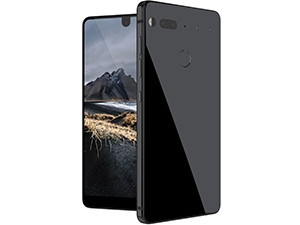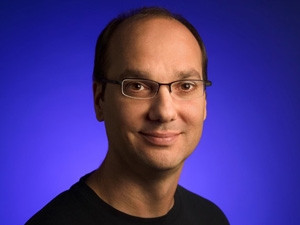
One of the original Android creators, Andy Rubin, has launched a premium smartphone called the Essential Phone.
The company says the smartphone will remain as simple as possible while combining unique features from other premium devices. The phones are not emblazoned with logos or have bloatware - it runs on pure Android with only Google apps installed.
It has a dual camera set-up similar to Huawei's P10 and P10 Plus. One camera is monochrome and the other is colour - both 13MP. The black and white camera is meant for low-light situations.
The smartphone could also be described as 'modular' as it has a space for accessories to be clipped to the top of the device via magnets, like the Lenovo Moto Z. The first accessory revealed is a 360-degree camera.
The 5.7-inch smartphone has very small bezels, which means its screen runs from edge to edge. The front camera is placed in the middle instead of to the side, and the screen wraps around it - leaving space for notifications on either side.
Other features include a Qualcomm 835 processor, 4GB of RAM, and 128GB of internal storage. The smartphone comes in one display size (5.7-inch) and one storage size (128GB), unlike competitors that usually launch a range of phones at different price points.
The device features a titanium body, instead of aluminium as used by Apple and LG, which the company says makes the phone sturdier.
Simple guidelines
Rubin left Google in October 2014 after a nine-year stint during which he built Android into a free, open source software platform. He was also head of Google's nascent robotics effort when he moved from the Android in 2013.
He says the principles on which he built the Android software have been carried through to the hardware Essential is developing.

In a blogpost, he detailed a few rules that went into the creation of the smartphone. Firstly, he stated: "Devices are your personal property. We won't force you to have anything on them you don't want to have." This informed the decision not to put logos or bloatware on the device.
The second was: "We will always play well with others. Closed ecosystems are divisive and outdated." This refers to the open source software used.
Other points included: premium materials and true craftsmanship shouldn't be just for the few, devices shouldn't become outdated every year, and technology should assist users.
The smartphones will first ship in the US and then move to other countries. Each unit will cost $699 (R9 142) or $749 (R9 796) if the 360-degree camera is included.
This is slightly cheaper than other high-end devices currently on the market. The Huawei P10 costs R12 999, the LG G6 is R12 099 and the Samsung S8 sells for R15 499.
Share